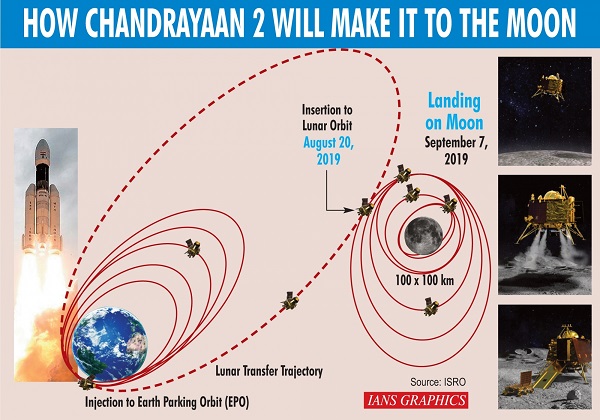Chennai, The guiding of Indias first spacecraft to the moon –Chandrayaan-1 — was a very big event in 2008 and about 200 officials were in tense and anxious, sending up their prayers to their ‘insta devathas (favourite deities) on the day when the spacecraft was being injected into the lunar orbit, recalled M. Annadurai, former Director, U.R. Rao Satellite Centre (URSC).
He was also the Project Director of India’s first moon mission Chandrayaan-1.
“That was the first inter-planetary mission for ISRO (Indian Space Research Organisation). It was also the first time we were tracking a satellite that was beyond 36,000 km,” he mused.
It was also the first time, the Deep Space Network was deployed by ISRO.
According to him, officials had the pictures of their favourite deities on their computer consoles. Some had laddus from the famed the Venkatachalapathy Temple in Tirupati.
“I was wearing a new dress. Normally on such big occasions, I would prefer to wear a new dress to feel fresh,” Annadurai added.
The global success rate for a mission like that was not very great and the acquisition of the polar orbit was a tricky aspect, he said.
The spacecraft tracking team and others were matching the Chandrayaan-1 actual orbit with that of the expected one.
On Nov 8, 2008, the Chandrayaan-1 was successfully injected into the lunar orbit and the ISRO officials heaved a big sigh of relief.
Many thanked their Gods for listening to their prayers.
The Chandrayaan-1 spacecraft was launched on Oct 22, 2008. Interestingly, its successor Chandrayaan-2 was also launched on 22nd but in the month of July, 2019.
The learnings of Chandrayaan-1 mission was helpful for ISRO’s second inter-planetary mission Mangalyaan or Mars Orbiter Mission (MOM) in 2014.
“During Mangalyaan mission, peanuts were distributed to the staff at the suggestion of an official of Jet Propulsion Laboratory, USA. They used to share peanuts during any critical space mission,” Annadurai said.
Speaking about critical operation on Tuesday, Annadurai said the Chandrayaan-2 orientation will be first changed to 180 degree.
Then the spacecraft’s on-board motors will be fired. Now the spacecraft’s velocity has to be reduced for an elliptical orbit.
After Chandrayaan-2’s insertion into the lunar orbit, ISRO will carry out four more orbit manoeuvres (August 21, 28, 30 and September 1) to enter it into its final orbit passing over lunar poles at a distance of about 100 km from the Moon’s surface.
Subsequently, the Vikram lander will separate from the orbiter on September 2, 2019 and for two days it will calibrate its systems.
Two orbit manoeuvres will be performed on the lander before the initiation of powered descent to make a soft landing on the lunar surface on September 7, 2019, ISRO said.
“That will be the terrifying 15 minutes of landing as everything should go well,” Annadurai said.
Soon after the rover-Pragyan- will roll down.
After working they will go to sleep. Owing the very cold climate the systems will be very cold and ISRO will try to wake up the systems 14 days after, that is, one lunar day.
On July 22, the Chandrayaan-2 was injected into an elliptical orbit of 170×45,475 km by India’s heavy lift rocket Geosynchronous Satellite Launch Vehicle-Mark III (GSLV Mk III) in a text book style.
The spacecraft comprises three segments — the Orbiter (weighing 2,379 kg, eight payloads), the lander ‘Vikram’ (1,471 kg, four payloads) and rover ‘Pragyan’ (27 kg, two payloads).









